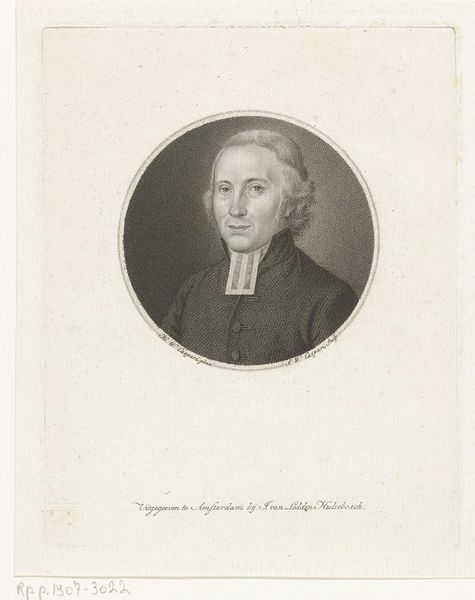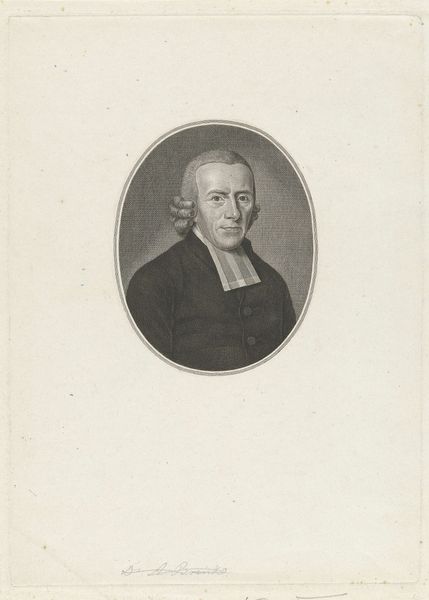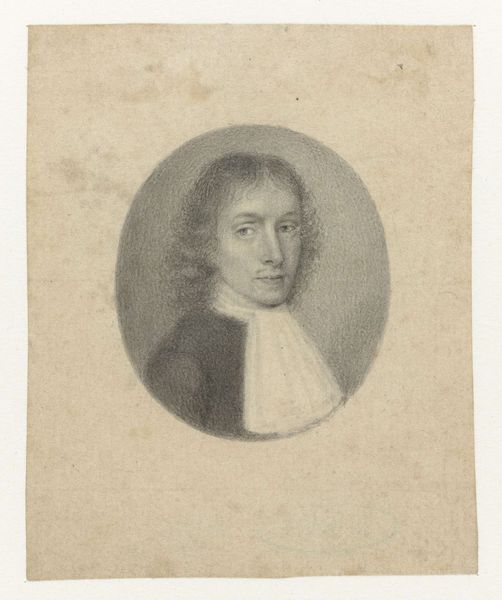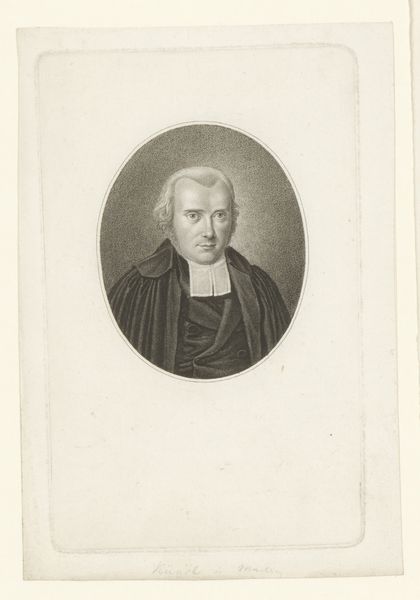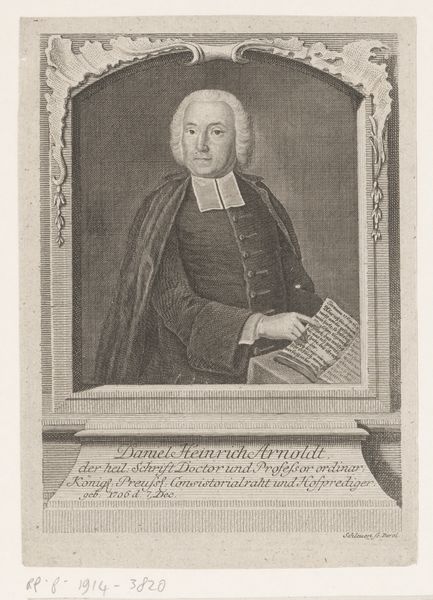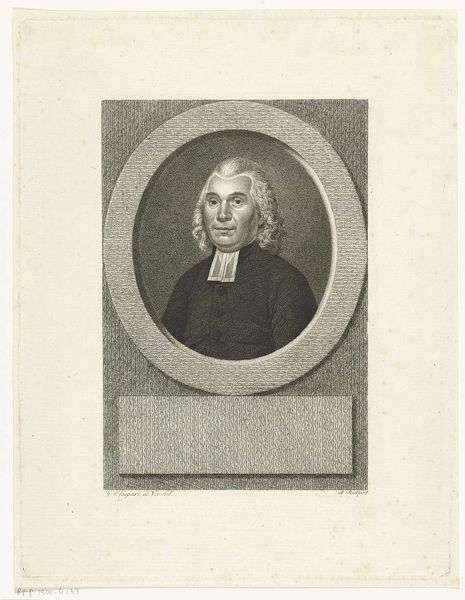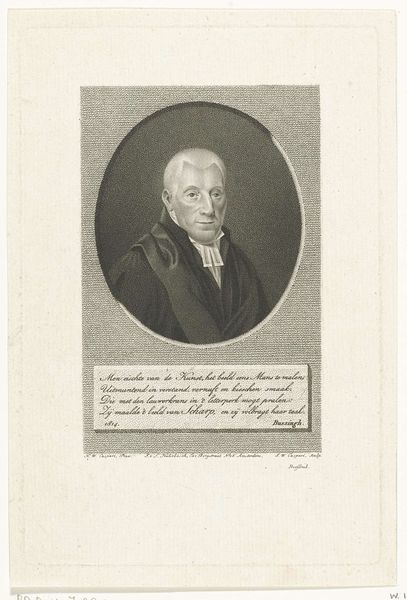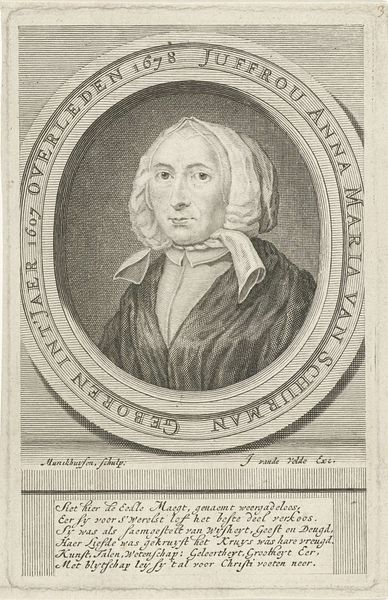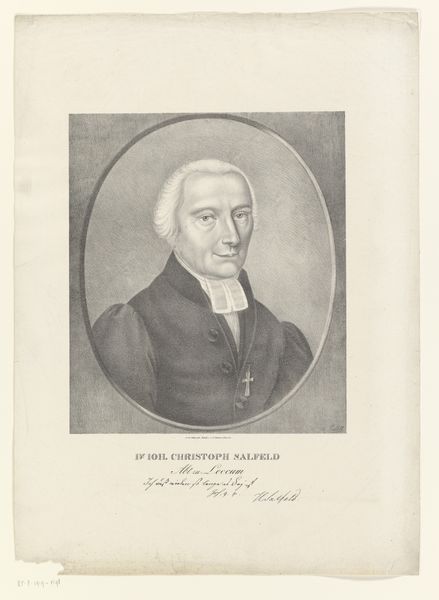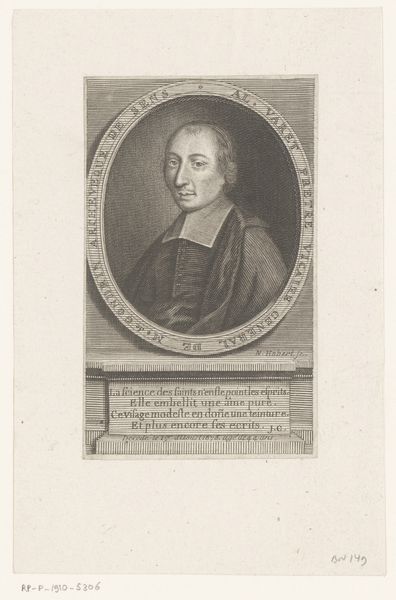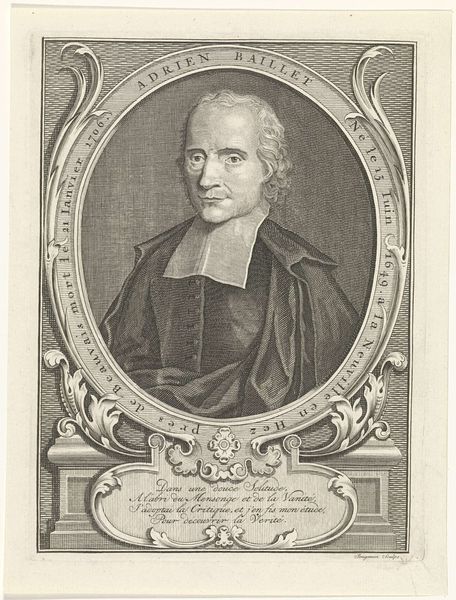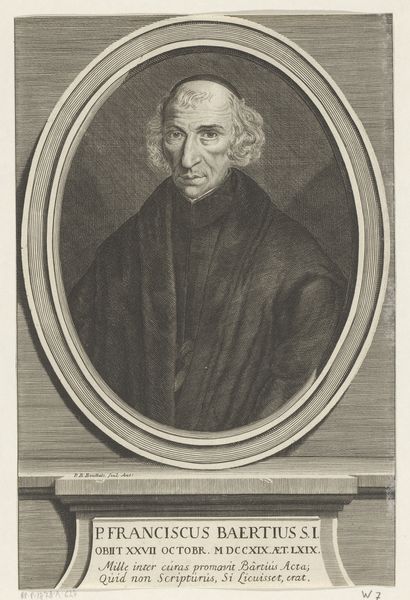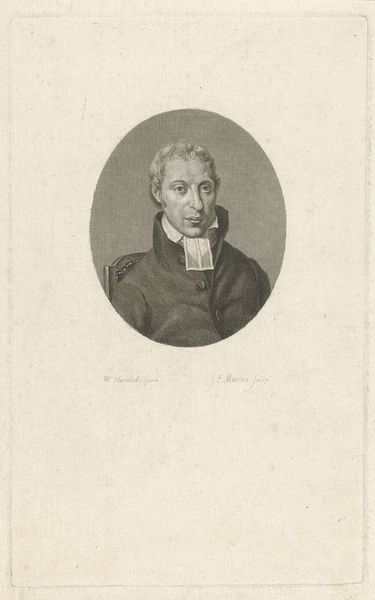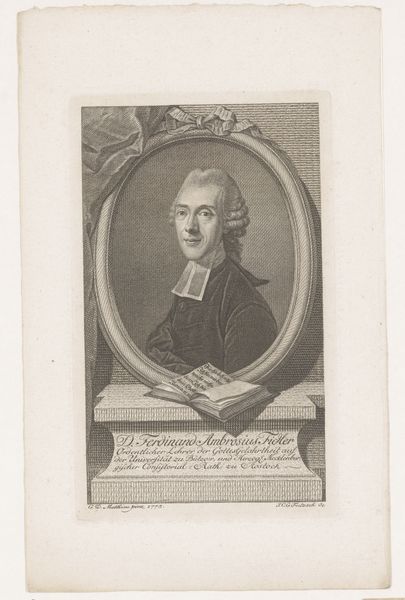
print, engraving
#
portrait
# print
#
old engraving style
#
history-painting
#
academic-art
#
engraving
#
realism
Dimensions: height 153 mm, width 122 mm
Copyright: Rijks Museum: Open Domain
Editor: So, here we have a portrait of Lodewijk Ten Bokkel, made sometime between 1789 and 1822 by Jan Willem Caspari. It's an engraving, and I'm struck by the contrast between the detail in his face and the simplicity of the overall image. What's your take on this? Curator: Considering its time, and medium, let’s reflect on how the means of print production influence the art itself. Engraving, at the time, represented not just artistry, but skill and access. To what extent was printmaking a means for wider circulation and access, breaking down exclusive art patronage systems? Editor: That's interesting. I hadn’t thought about how printmaking itself played a role in making art more accessible. Before photography, engravings would have allowed the broader public to see the likeness of public figures… Curator: Exactly. We must analyze what images were made, by whom and for whom, and how these considerations were interwoven with social status. An engraving, in essence, replicated and multiplied images. Is this an art object for the elite, or does its value lie more in its wide distribution and utility? The portrait itself reinforces a certain idea of the man being portrayed and in this time of upheaval does this choice in materials make it more political than is apparent? Editor: That really changes how I see it. I initially focused on it as a portrait of an individual. However, looking at it now through a Materialist lens highlights the societal factors influencing it. So much can be deciphered from the method in which the art was created. Curator: And consumed. Analyzing its making is only half the story. How and where were such prints displayed? Who had access to them and under what circumstances? These are vital questions to address. Editor: This has completely changed my perspective! Thanks for pointing out the significance of considering materials, techniques and its role in wider society, really changes everything. Curator: Indeed. Understanding how materials, processes, and dissemination shaped its historical and social impact gives it so much deeper meaning.
Comments
No comments
Be the first to comment and join the conversation on the ultimate creative platform.
